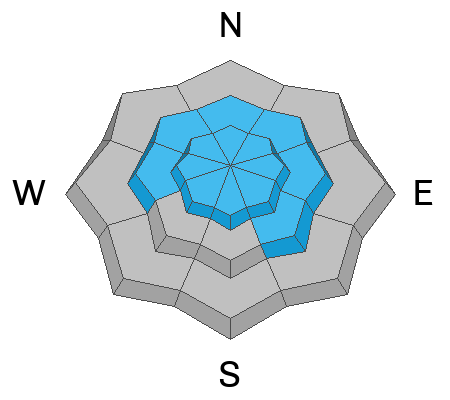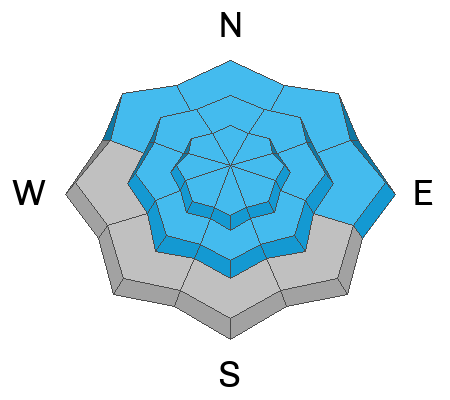Our annual party and fundraiser is coming up on December 6 in Logan at the Cache. 19th Annual Utah Avalanche Center Pray for Snow Party and Fundraiser information and tickets
HERE.
Join the Utah Avalanche Center and the Division of Outdoor Recreation to celebrate the Fourth Annual Avalanche Awareness week, from December 4 - December 11. Click
HERE to view the full list of events for the week.
The avalanche danger is HIGH in the backcountry. Heavy snow and drifting overnight overloaded widespread slopes with buried persistent weak layers and poor snow structure. Large natural and human triggered avalanches are likely in many areas, and people should avoid travel in all backcountry avalanche terrain, meaning avoid being on or under slopes steeper than about 30°.
Remote mountain weather stations report around 9 inches of new snow and just under 1" SWE as of early this morning, with perhaps twice that amount in my driveway in West Logan. Yesterday's strong southwest winds on Logan Peak veered early this morning and diminished a little, now blowing from the northwest around 30 mph with 50 mph gusts. It's 5° F at the CSI weather station on Logan Peak at 9700' in elevation and 13° F at the Franklin Basin Snotel site at 8100'.
Snow showers and widespread blowing snow should taper off this morning, and temperatures will drop into the single digits. 15 to 30 mph west winds are expected and wind chill values at around 8500' will be as low as -14° F. It'll be partly sunny tomorrow and the next storm is expected to start impacting the zone on Sarturday night, lasting through Monday.
A party of riders report triggering a few small, manageable, soft slab avalanches on north facing slopes at upper elevations in Providence Canyon on Tuesday.
See our updated list of observed avalanches from across Utah
HERE 










